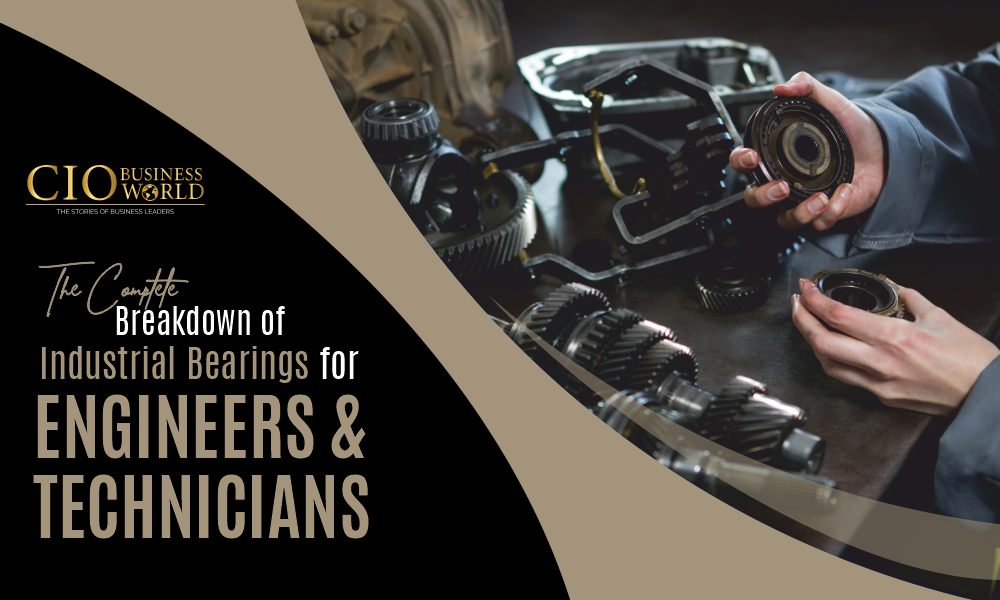What keeps mechanical systems running smoothly? Bearings are small components that reduce friction, support movement, and maintain alignment under pressure. Without them, wear and energy loss would increase dramatically.
Let’s explore the full breakdown of how bearings function and where they’re best applied.
1. Fundamental Roles in Mechanical Systems
Bearings serve one core purpose: reducing friction between moving parts. In many assemblies, different types of bearings are selected based on load direction, speed, and required lifespan. They allow shafts to spin freely while supporting radial or axial forces. This makes them vital in motors, gearboxes, wheels, and countless industrial tools. Without the right component in place, heat and wear would quickly damage machinery.
Along with reducing wear, bearings also improve energy efficiency. Less friction means less resistance, which directly impacts power consumption. Engineers often use them to maintain alignment under stress. Technicians depend on them to support rotating parts without added complexity.
2. Common Designs and Where They Fit
Each category of bearing fits specific needs and limitations. Ball bearings are known for high-speed performance and low friction. They suit light to moderate loads, often found in electric motors and household appliances. On the other hand, roller variants carry heavier loads and are better for shock-absorbing conditions.
Specialised options like thrust and needle bearings cover more niche demands. Thrust designs focus on axial load handling, while needle versions are ideal where space is limited. Spherical designs are chosen for applications with misalignment concerns. Each type has distinct limits in speed, load, and installation.
3. Materials That Influence Performance
Material selection affects heat resistance, strength, and corrosion behaviour. Stainless steel is popular for its durability and rust protection. It works well in damp or chemical-rich environments. Chrome steel, though less resistant to moisture, offers excellent hardness and wear resistance.
Plastic and composite materials can be effective in lighter-duty, low-noise environments. These are useful in electronics, office equipment, or medical devices. Advanced coatings like PTFE or zinc plating also improve resistance to harsh conditions. Knowing the demands of the application helps select the best fit.
4. Benefits of Precision Selection
Making the right bearing choice impacts everything from noise levels to operational lifespan. Matching the load, speed, and environmental conditions ensures longer service intervals. Engineers and technicians often rely on manufacturer data and field tests to decide.
Key benefits of making the right choice include:
- Reduces heat build-up and energy loss
- Extends machinery life with a proper fit
- Minimises vibration and noise
- Lowers lubrication needs
- Prevents premature failure under load
- Supports alignment and rotational accuracy
Inspection and maintenance routines also help prevent costly repairs. Selecting with care helps the entire system run better.
Choosing a Reputable Supplier
A reputable supplier offers verified specs, consistent quality, and dependable delivery. These factors impact machine uptime and operational planning. Certification and test documentation should be available on request. Reliable partners also provide stock consistency and technical support.
Long-term reliability depends on product integrity from start to finish. Working with known brands or suppliers with industry references adds confidence. It’s worth checking reviews, service records, and material certifications. Having a strong supply relationship saves time and prevents delays. A good supplier understands the stakes and delivers every time.
Understanding how different formats work and where each excels helps avoid costly errors. Choosing wisely from various types of bearings, along with sourcing from a dependable supplier, ensures steady performance and fewer breakdowns. From ball to roller and beyond, selecting the right part extends machinery life and boosts efficiency. Small choices often make the biggest difference in mechanical design.
Read More Blogs
Dive into expert-written articles from CIO Business World Magazine and stay ahead in the business world.
Explore Now







